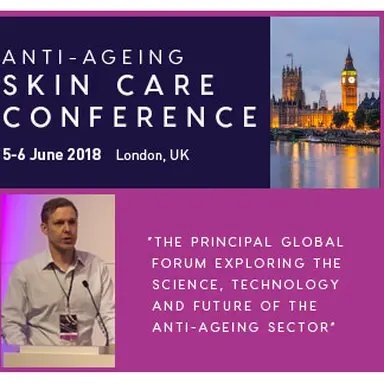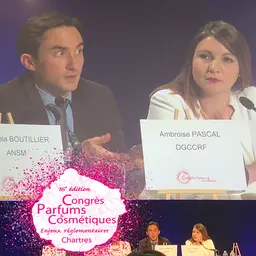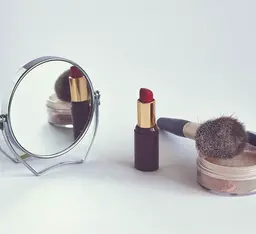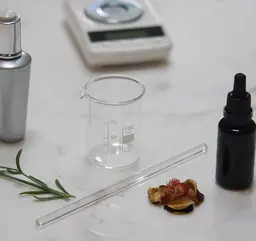
Who would not like to know the secret to looking younger? At the 6th Anti-Ageing Skin Care Conference held in London on June 5-6, 2018, Dr David Gunn, of Unilever, presented the results of his research on the factors impacting the appearance of an individual and his/her age perceived by others. On the agenda: genes, exposome, DNA, epigenetic clock…
First, Dr Gunn mentioned a study conducted in 2008 by his team on a clinical methodology for generating perceived age as a biomarker of ageing using facial photographs of subjects shown to assessors.
Wrinkles, oval of the face, lip thinness… it was observed that people the same actual age could be perceived either as older or younger. As a consequence, Dr Gunn’s team asked the following major question: why do some people look younger than their age?
No doubt quite a few people – men and women – will be interested in the answer… although we seem to be quite optimistic about our own appearance: when researchers asked a group of 162 women how old they thought they looked, only three gave a figure higher than their actual age!
The roles of genes and lifestyle
 This issue mainly involves understanding what creates age perception differences from one person to another: what parts do genetics, the environment, and our lifestyle respectively play? Just have a look at these two cars in their current condition. They date back to the same period. Now, you understand this question deserves to be investigated…
This issue mainly involves understanding what creates age perception differences from one person to another: what parts do genetics, the environment, and our lifestyle respectively play? Just have a look at these two cars in their current condition. They date back to the same period. Now, you understand this question deserves to be investigated…
Part of the answer can be found in this study conducted by Danish researchers Kaare Chistensen and Helle Rexbye on true and non-identical twins.
‘True twins have the same DNA sequences,’ explained Dr Gunn, ‘which does not prevent differences from being observed in terms of physical appearance’. This suggests the environment and our lifestyles have influences similar to genetics.
DNA variations
There are techniques available to measure all DNA sequences, so researchers can compare those of individuals that look younger than their age with those of others.
An extensive study published in 2016 in Current Biology and conducted since the early 1990s in the region of Rotterdam, Netherlands, for measuring how diseases develop with age helped set up a significant database of facial photographs.
The analysis of over eight million SNPs (the ‘single nucleotide polymorphisms’ that correspond to minor genome variations within a population) of 2,693 adults provided evidence of a strong association between perceived age and the genetic associations marked by multiple SNPs in the MCR1 gene.
‘All our chromosomes go in pairs, which means they comprise two alleles,’ explained David Gunn. ‘Within the European population, one common form and several rare forms were identified, so everyone can be a carrier of the MCR1 gene with two alleles of common forms, or of MCR1 with one common allele and one rare allele, or of MCR1 with two rare alleles.’
The study showed that the individuals that carried the MCR1 gene with two common alleles looked younger than the others, on average, those that carried MCR1 with one common allele and one rare allele looked exactly their actual age, and those that carried MCR1 with two rare alleles looked about two years older than their actual age…
Therefore, the MCR1 gene is related to skin ageing, but also to the production of melanin. The study continued to search for a relationship with sun exposure and the wrinkles it can induce, but no statistically significant difference could be highlighted.
Lifestyle modulations
Of course, genetics is not the answer to everything: the influence of lifestyle has also been studied in depth. A study published in 2015 in the British Journal of Dermatology showed that both good and bad habits have a significant impact on perceived age:
• Smoking: +2 years compared to the biological age
• Sun exposure: +4 years
• Oral treatments: -2.5 years (healthy teeth contribute to preventing face sagging, explained David Gunn)
• Skin hydration: -2 years…
As for the influence of nutrition, it was also explored by Dr Gunn, in particular by linking the food habits of 2,753 subjects with the appearance of their facial wrinkles. The results were published in 2018 in the Journal of the American Academy of Dermatology.
Rather than analyzing foods one by one, researchers chose to take into account food groups (people who eat green vegetables more often also tend to consume more of the other vegetables and fruit…). As a result, foods were divided into two groups: those known for being healthy (vegetables, fruit, fatty fish, mineral water…) and those known for being less healthy (cheese, meat, snacks, soda….).
Conclusion: in terms of impacts on the appearance of wrinkles, fruit is beneficial, while meat and snacks make your face furrowed!
Epigenetics, between nature and culture
‘Epigenetics is a relatively new science,’ David Gunn explained. It is defined as the Biology discipline that studies the nature of the mechanisms that modify gene expression in a reversible, transmittable (during cell division), and adaptive way, without changing the nucleotide sequence. To Dr Gunn, it determines our health condition and how we age according to our lifestyles and environment.
Exploring skin ageing with epigenetics
All cells in our bodies have an identical DNA, which, for example, does not prevent our brain cells from being very different from our skin cells: ‘The cells that produce melanin are very active in our skins to protect us from the UV ray effects… but they are useless in the brain,’ David Gunn said. ‘For our “useful” genes to be activated, the DNA should not have access to our cells, so that they can get other types of information. Epigenetics controls the access to the DNA, which regulates the genes, so that they are activated or not… so, it commands the function of cells, whether they be skin or brain cells, fibroblasts, keratinocytes, etc.’
However, as time goes by, depending on food diet, stress level, sleep quality, pollution and environmental conditions, microbial interactions, etc., in short, depending on the impact of the exposome, epigenetics can change and have consequences on our ageing.
To explore this aspect, a study was conducted in California on 48 subjects of two different age groups (20-30 and 45-65), whose ancestors were of European and Chinese origin. The researchers carried out skin biopsies on two areas exposed to the sun or not to analyze ageing-related differences depending on the age and sun exposure.
The results confirmed those of other previous studies: sun exposure affects DNA methylation (slight increase and strong decrease on the skin areas exposed, compared to those that are not). Dr Gunn explained he is continuing his work to clarify all the aspects to this phenomenon.
Epigenetic clock: the new ageing measuring tool
The concept has been in the air for about eight years and was perfected by two studies which showed that epigenetic changes seem quite similar in all individuals. As a result, they represent a useful tool to read the ageing process.
One of these studies, led by Steve Horvath and published in 2013 in Genome Biology, focused on all human tissues and their epigenetic changes over time. Based on DNA methylation data, he deduced a multi-tissue predictor as a marker of the biological age.
The other, published in 2016 in Aging, confirmed that the age estimation based on DNA methylation, also called epigenetic age, was a reliable biomarker of the biological age.
The skin application of this breakthrough was explored by another study, published in Genome Biology in 2015 and based on the study of the DNA in two body areas (one exposed to the sun, the other not exposed) of two different age groups.
First observation, Horvath’s multi-tissue predictor works: the individuals it ‘calculates’ as old are actually old. And yet, strangely enough, it indicates the skin areas exposed to the sun as ‘younger’ than the non-exposed areas, which is obviously not right. Therefore, it may not be such a good skin ageing marker, in particular in terms of photoageing.
So, the method was refined by creating an epigenetic clock specific to the skin, which provided better results – but, again, with a margin of error (about five years, compared to eleven for the Horvath model).
‘These models need to be further enhanced to get even closer to the truth, but everything seems to show the epigenetic clock can be a good skin ageing measuring instrument,’ David Gunn concluded.
In conclusion, he gave a few answers to the first question: ‘Why do some people look younger than their age?’
• Both genetics and lifestyle-related factors have an influence on our youthful appearance.
• The key to understand perceived ageing is the interaction between these two elements.
• Epigenetics can provide this key.
• The outcome of research in this field will help adapt our lifestyles to our genetics… for an ever-younger appearance… before thinking about reversing the ageing process?
About David Gunn
After gaining a PhD in genetics, Dr Gunn carried out postdoctoral research at Newcastle University investigating the genetic determinants of heart disorders. In 2000, he joined Unilever Research and Development in the UK, focusing on genomic investigations into the mechanisms of skin ageing. More recently, he has been leading large international research projects with various Universities investigating skin, facial and hair ageing. A regular invited speaker at international conferences, author an array of scientific publications, Dr Gunn’s research has been covered by BBC Horizon, World news, radio and digital media alike. Working at the interface between basic scientific research and translational science, Dr Gunn’s work focuses on how biological insights can be translated into benefits for the general public and Unilever business.













